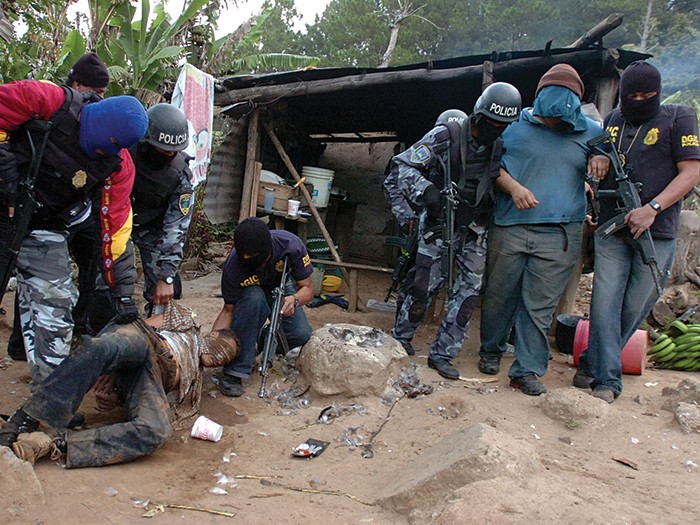Business Travel Risk
Terrifying Experiences

Kidnap and ransom has grown into a thriving criminal practice over the past 10 years, with the rise of the Islamic State in the Middle East, not to mention the recent spike in piracy in the Gulf of Guinea off the west coast of Africa.
The scale of the kidnap and ransom (K&R) problem is massive, with combined media reports putting ransom demand figures at more than $1 billion per year globally.
A series of independent studies by the crisis response firm Olive Group estimates that there are about 100,000 kidnappings every year, of which about 40 percent involve a ransom demand.
Among the highest profile cases in recent years was the kidnap and murder of American journalist James Foley by ISIS in northern Syria last year. ISIS demanded $132 million for Foley’s release.
“K&R is a very lucrative criminal endeavor with a high return on investment,” said Michael Sharp, lead underwriter for kidnap and ransom at Ironshore International.
“The rise of Islamic State and their use of kidnapping Westerners as a political tool has increased the number of kidnappings in the Middle East and Africa, in particular.”
Experts say that the bulk of these crimes go unreported because victims and their relatives fear retribution or have been warned not to do so by the authorities or the company that secured their release.
“It’s hard to say the true extent of the problem,” said Bert Van Wagenen, senior vice president of specialty underwriting at HCC Specialty.
“There’s a tremendous amount of publicity about kidnappings in the news right now, but there have been similar incidents in the past that didn’t receive the same attention, so it’s difficult to gauge if it’s getting any worse.”
Chuck Regini, director of global response at crisis response company Unity Resources Group, said that only an estimated one in 10 kidnappings actually gets reported.
However, despite this, he warned that there has been a clear rise in the number of incidents over the last 10 years. In particular, he has seen a spike in kidnappings of foreigners working overseas this year. The spike has occurred across all business sectors and socioeconomic groups, he said.
“As long as international commerce continues to grow in the developing world, and as long as security conditions remain the same and crime goes unchecked, kidnapping numbers will likely grow,” he said.
Insurers have responded to the upsurge in kidnaps and ransoms by increasing their capacity. Most recently, Ironshore’s professional and management liability subsidiary, IronPro, announced that it had extended its coverage capacity for U.S.-based businesses by $5 million, to $25 million, and HCC now offers a limit of $50 million.
Premiums written in this area have also risen as a result of the heightened threat of kidnappings. At least 75 percent of Fortune 500 companies now hold K&R policies, according to industry estimates.
Christopher Arehart, global product manager for crime insurance at Chubb, said that at a rough estimate, global kidnap and ransom operations by terrorists and other criminals brings in hundreds of millions of dollars every year.
Among those most at risk, he said, are exploration firms, non-governmental medical and humanitarian aid organizations, and journalists operating in the world’s harshest and most dangerous environments. Colleges and universities with faculty and students overseas are also at high risk.
“The biggest areas of risk are in countries where there is political instability and poverty,” he said.
Kidnap and ransom was traditionally more widely known in Latin America, in Mexico, for example, but has now spread to Africa, the Middle East and parts of Asia-Pacific.
In terms of underwriting, HCC’s Van Wagenen said that Mexico remained the No. 1 hotspot for kidnap and ransom, followed by Nigeria, Libya, Syria and Pakistan.
Arehart said that while recent media coverage highlights the increase in the use of K&R as a business by terrorists, kidnap and ransom has been used by criminals and thugs throughout history.
“The business aspect of kidnap and ransom remains tried and true,” he said. “At the end of the day it’s about one thing — money.”
He said that kidnappers will always target low-risk, high-reward situations — the risks are that they get caught, prosecuted, jailed or even killed; the rewards, however, are much greater, with the chance to extort millions of dollars out of victims’ families, and their companies, he said.
“When a plant has been infiltrated by a gang or terrorist cell, often the only option is for the company to shut down its operation completely, resulting in a significant loss of business income.” — Christopher Arehart, global product manager for crime insurance, Chubb
“In the Western Hemisphere, the risk is greatest to the local manager,” he said.
“The reverse is true of the Eastern Hemisphere, where the locals have less exposure and the expatriate is the one most at threat.
“The perception among kidnappers in this region of the world is that Westerners are wealthy beyond their dreams, and that they will be able to extort large sums of money out of them.”
Jim Kardaras, senior vice president at Marsh’s FINPRO practice, said that the biggest motivating factors behind kidnap and ransom after political instability and poverty are corruption and the presence of organized criminal gangs.
“The key driver for kidnap and ransom is mass civil uprising or civil war, producing a favorable environment for armed gangs and criminal groups to operate in,” he said.
“Organized criminal activity is predominantly financially motivated and where that is the case, hostages are treated as a commodity for financial gain.”
Another key driver has been the global credit crunch, said Tom Dunlap, kidnap, ransom and extortion underwriter at Liberty Mutual.
“This has led to an increase in criminal activity in many parts of the world,” he said.
“It has been exacerbated by the fact you can get all kinds of information online about who’s being targeted and the ransom sums being demanded, and this in turn has resulted in many copycat type crimes.”
Van Wagenen said that a typical K&R policy would cover kidnap and ransom, extortion and detention. That includes the value of any ransom to be paid as well as any expenses incurred along the way, he said.
The policy also covers the fee for using a qualified crisis response firm retained by the insurer that is on call 24/7 to help find an individual and secure his or her safe release, he said.
“Being able to respond immediately in a kidnap and ransom situation is the most important part of any policy,” he said.
Arehart added that a standard policy will cover companies for any litigation costs that don’t come under the sphere of general liability or workers’ compensation.
“They are designed to protect you against any lawsuits brought by an employee and any indemnity that you may need to pay as part of a settlement with the individual,” he said.
One of the biggest factors that is overlooked, he said, however, is business interruption — which is often not included in a standard policy.
“When a plant has been infiltrated by a gang or terrorist cell, often the only option is for the company to shut down its operation completely, resulting in a significant loss of business income,” Arehart said.
“Being able to respond immediately in a kidnap and ransom situation is the most important part of any policy.” — Bert Van Wagenen, senior vice president of specialty underwriting, HCC Specialty
In terms of the market, capacity is plentiful, he said, although it’s limited to around five or six key players.
Kardaras said that despite the surge in interest and new entrants to the market, brokers have long resisted the insurers’ urge to increase the price of their premiums and that rates still remain low, compared to many other lines.
“On the occasions where premiums have gone up, we have still managed to get enhanced coverage for our clients,” he said.
There are, of course, a number of preventative steps that companies can take to protect themselves and their employees against kidnap and ransom, said Arehart.
Among the most important is to evaluate and understand the environment in which employees are working and to come up with an appropriate contingency plan, he said.
“Essentially you need to know the risks associated with the country you operate in and who is going to be most at risk,” he said.
He recommended that company employees keep a low profile, dressing down and removing any expensive jewelry they may have, and to make any travel arrangements well in advance using their own private transport.
Steve Balmer, kidnap and ransom product manager at Travelers, said: “It should be noted that while kidnapping is a low frequency crime, its impact is substantial.
“The effects are not just felt by the hostages, who are usually left psychologically, if not physically, scarred,” he said.
“It also affects the hostage’s family and friends, who often have to make difficult decisions that could impact the outcome of a case, and their employers, whose reputation and profile could be affected as a result of the event.”











